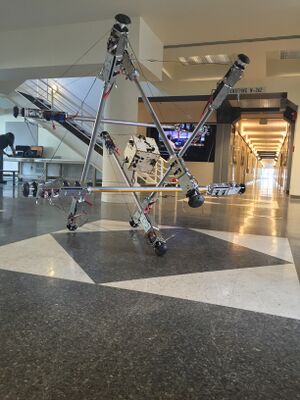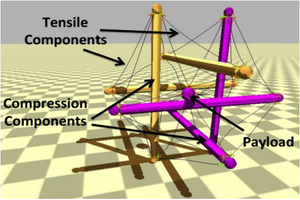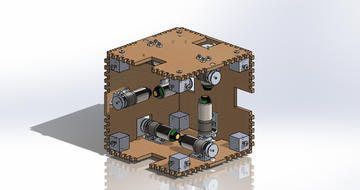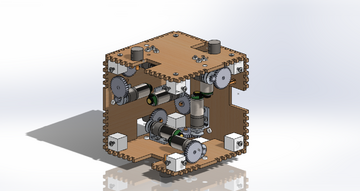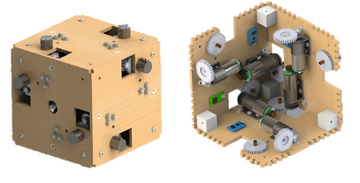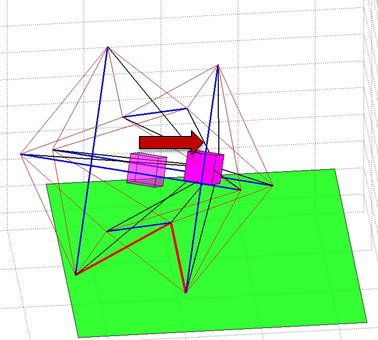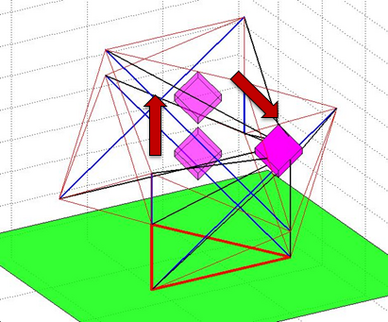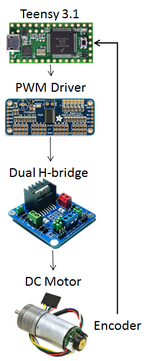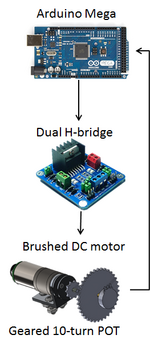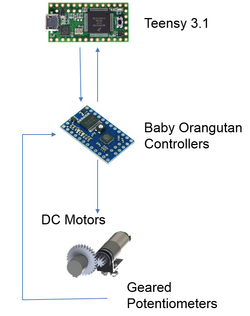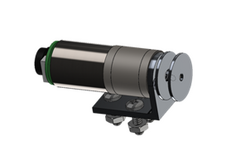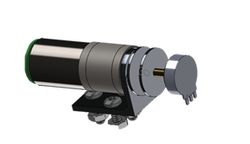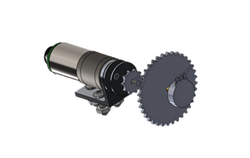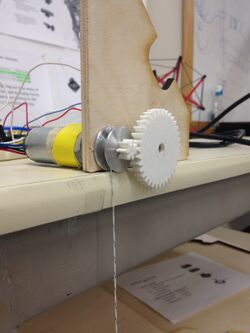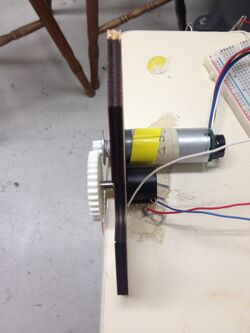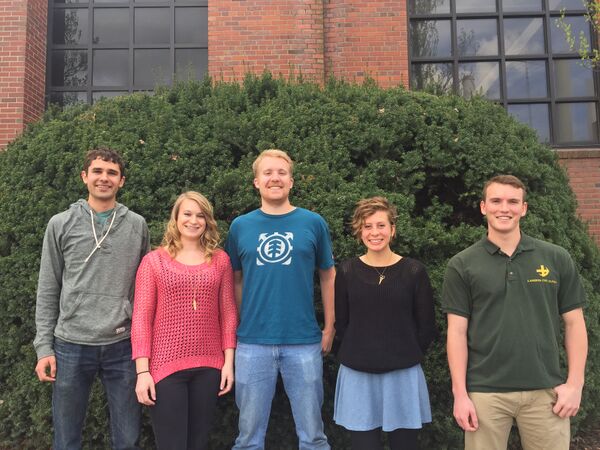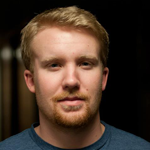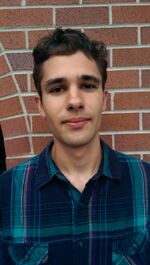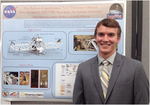Tensegrity Internal Actuation
| 2014 University of Idaho Capstone Senior Project | |
|---|---|
| NASA'S Tensegrity Robot | |
| Sponser | NASA |
| Team Name | T.I.T.A.N. (Tensegrity InTernal ActuatioN) |
| Duration | Fall 2014- Spring 2015 |
| Faculty Advisor | Dr. Mathew Riley |
| Team Members |
|
| Graduate Advisors |
|
The goal is to design an actuated internal payload to provide a locomotion method for the NASA SuperBall tensegrity robot.
Problem Definition
Background
| Tensegrity is a design term meaning Tensile Integrity. This describes the construction of a tensegrity structure. Every member in a tensegrity is either in pure tension or pure compression which eliminates the need to compensate for bending moments and allows designs to be light weight with simple cross-sections. Our tensegrity structure is a 6 strut model.
NASA's SuperBall Tensegrity robot is a NASA Innovative Advanced Concepts (NIAC) project with the goal of developing an exploratory tensegrity robot. In previous years student's have developed the tensegrity structure of the robot, and through rigorous analysis and testing the structure has been validated for a space drop on to Saturn's moon, Titan. Currently there are two projects underway, one of which being here at the University of Idaho where locomotion of the robot through internal actuation is being developed. In other labs the actuation of the external frame is being explored. |
Deliverables
After consulting with NASA Tensegrity leaders a list of deliverables was developed. The deleverables and current status are summarized below.
|
Catagory |
Metric |
Priority |
Current Status |
| Controls Location | On Board | Minimum | Complete |
| Tethered | Desired | Complete | |
| Controls Method | Manual | Minimum | Complete |
| Pre-Programmed | Luxury | Incomplete | |
| Power Location | On Board | Desired | In progress |
| Tethered | Minimum | Complete | |
| Battery Life | 30 mins | Desired | In progress |
| >30 mins | Luxury | In progress | |
| Actuators Type | Brushless DC motors | Desired | Incomplete |
| Brushed DC motors | Minimum | Complete | |
| Scientific Payload Mass | 2 kg | Minimum | Complete |
| 5 kg | Desired | Complete | |
| >5 kg | Luxury | Complete | |
| Sensors | Encoders | Minimum | N/A |
| IMU | Minimum | In progress | |
| Tension | Desired | Incomplete | |
| Absolute Position | Luxury | Complete | |
| Locomotion Distance | Payload to tipping point (no tip) | Minimum | Complete |
| 1 Tip of structure | Minimum | Complete | |
| 10 Tips of structure | Desired | Incomplete |
Specifications
The final prototype will have the following specifications.
- Have 12 actuators
- Have a sensor calibration sequence
- Be able to move around inside the tensegrity structure
- Generate locomotion by tipping the tensegrity structure
Project Learning
| Currently there are three major categories to this design: Mechanical Design, Payload Kinematics, Controller Design, and Position Measurement |
Mechanical Design
|
Payload Prototype |
|||
| Prototype I - utilizes laser cut wood, aluminum mounts and spools and encoder positions | Prototype II - utilizes previous design with 10-turn potentiometers with geared inputs | Prototype III - utilizes previous design with new controllers |
Payload Kinematics
| Using MATLAB a kinematic model was built to understand cable lengths, tipping mechanics, and payload kinematics. | Isosceles face has a point to point trajectory. | Equilateral faces require an intermediate point trajectory |
Controller Design
|
Payload Control Scheme |
|||
| Controller I - utilizes Teensy 3.1 controller, Adafruit PWM driver, and encoders for position measurement | Controller II - utilizes Arduino Mega controller and 10-turn potentiometers for position measurement | Controller III - utilizes 1 Teensy 3.1 Master and 6 Baby Orangutan Slave microcontrollers. It uses a 10-Turn potentiometer for position measurement. |
Position Measurement
|
Measurement Options |
|||
| Measurement I - utilizes existing encoders for cable length measurements | Measurement II - utilizes a multi-turn potentiometer for cable length measurements | Measurement III - utilizes 10-turn potentiometers with a 4:1 gear ratio for cable length measurements | |
|
Chose Measurement III |
|||
| Front View | Side View |
Team Information
| Team TITAN: Amy, Kelsey, James, Mark, and Dylan |
|---|
| Picture | Bio | Discipline | ||
|---|---|---|---|---|
|
Computer Engineering | |||
|
Mechanical Engineering
| |||
|
Mechanical Engineering | |||
|
Mechanical Engineering
| |||
|
Electrical Engineering |
